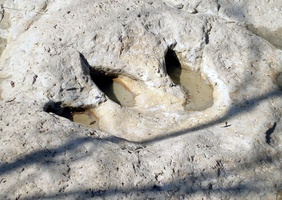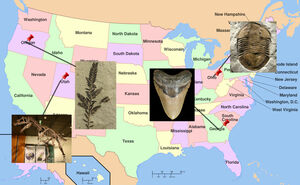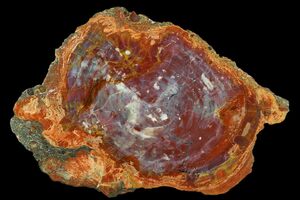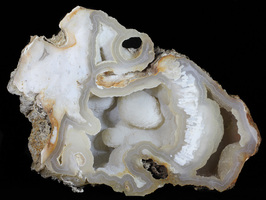Louisiana State Fossil - Petrified Palmwood (Palmoxylon)
In 1976 the Louisiana state legislature officially designated petrified palm wood of the genus Palmoxylon as the Louisiana state fossil. During the Oligocene period, approximately 30 million years ago the coastline of Louisiana was about 100 miles farther inland that it is today. Palm trees dotted the coastal swamps. Some of the fallen palm trees became buried in mineral rich sediment primarily composed of volcanic ash before they had a chance to decay. The minerals in the sediment seeped into the porous wood and over time replaced the organic wood structure fossilizing in.
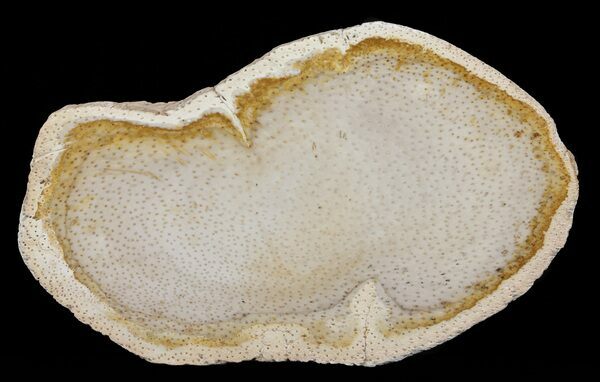
A polished slab of petrified palmwood from Louisiana showing the distinctive vascular structure which appears as small dots.
Petrified palmwood is not a true wood, as it’s trunk was composed of parenchyma, a fibrous support material that surrounded hollow tubes of the plant's vascular structure. These tubes transported water, nutrients, wastes, and other materials through the plant. When petrified palm wood is cut and perpendicular to the trunk these this vascular structure can be seen as closely packed dots.
Today, gemmy petrified palm wood can be collected from the Catahoula Formation in Western Louisiana and Texas. Besides being the state fossil of Louisiana this fossilized palm wood is also the official state stone of Texas.

A polished slab of petrified palmwood from Louisiana showing the distinctive vascular structure which appears as small dots.
Petrified palmwood is not a true wood, as it’s trunk was composed of parenchyma, a fibrous support material that surrounded hollow tubes of the plant's vascular structure. These tubes transported water, nutrients, wastes, and other materials through the plant. When petrified palm wood is cut and perpendicular to the trunk these this vascular structure can be seen as closely packed dots.
Today, gemmy petrified palm wood can be collected from the Catahoula Formation in Western Louisiana and Texas. Besides being the state fossil of Louisiana this fossilized palm wood is also the official state stone of Texas.
 Reviews
Reviews
